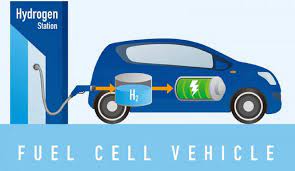𝑨 𝑪𝒐𝒎𝒑𝒍𝒆𝒕𝒆 𝑮𝒖𝒊𝒅𝒆 𝒕𝒐 𝑺𝒐𝒍𝒂𝒓 𝑽𝒆𝒉𝒊𝒄𝒍𝒆 [𝗣𝗗𝗙 𝗘-𝗕𝗼𝗼𝗸]
Solar Vehicle to 2028 - Covid-19 Impact and Global Analysis - by Component (Ev Battery Cells and Packs, On-Board Charger, Infotainment System, Instrument Cluster); Industry Trends (Electric Taxi, Robo-Taxi, Light Solar Vehicle, Battery Swapping, Electric Autonomous Vehicles); Charging Infrastructure Type (Normal Charge, CCS, Chademo, Tesla Supercharger); Vehicle Type (Passenger Cars, Commercial Vehicles); Charging Station Type (Normal, Super, Inductive Charging) and Geography
𝐆𝐞𝐭 𝐚 𝐬𝐚𝐦𝐩𝐥𝐞 𝐏𝐃𝐅 - https://www.theinsightpartners.com/sample/TIPRE00004124/
A solar vehicle is an electric vehicle usually run on only power from the sun, although some models will supplement that power using a battery, or use solar panels to recharge batteries or run auxiliary systems for a car that mainly uses battery power. The photovoltaic (PV) cells contained in solar panels convert the sun's energy directly into electric energy.
The solar vehicle is heavily influenced by driving factors such as favorable government policies and subsidies, heavy investments from automakers in EVs, growing concern about environmental pollution and increased vehicle range per charge boosts the growth of this market. However, lack of standardization is impacting negatively on the growth of this market in the current market scenario.
#solarvehicle





